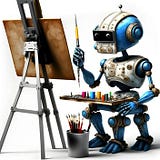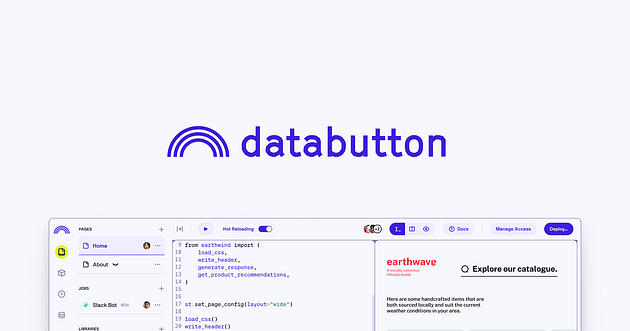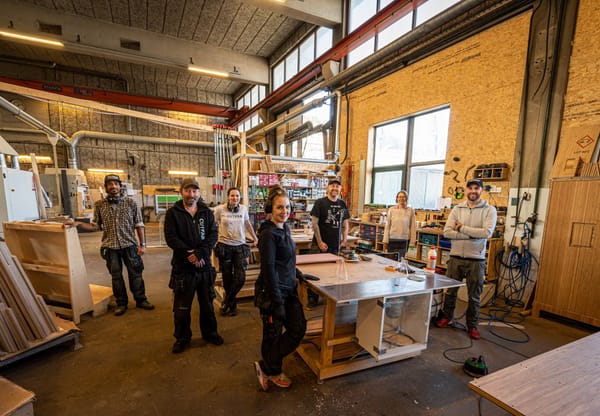No-code tools, get ready for disruption!
A new era of no-code is about to begin and-similarly-will be driven by excellent tools enabling non-technical people to build.

The no-code movement changed the world by creating a generation of non-technical builders through amazingly well-built products. Now, a new era of no-code is about to begin and — similarly — will be driven by excellent tools enabling non-technical people to build.
2023 highlighted a significant shift in no-code technology. Until recently, these tools have been designed to fit the technical limitations of their core user. However, this space is now facing major disruption due to a new generation of AI-native tools taking advantage of the rapidly advancing code generation capabilities of Large Language Models (LLMs).
The no-code movement changed the world by creating a generation of non-technical builders through amazingly well-built products. Now, a new era of no-code is about to begin and—similarly—will be driven by excellent tools enabling non-technical people to build.
No-code tools are great, but limited
The previous decade gave us amazing no-code tools such as Retool, Airtable, Bubble, and Zapier. Using these tools, non-technical people have been launching marketplaces, building their own CRMs, and connecting systems together without ever talking to a “proper dev.” Around them, an entire industry of no-code consultancies have formed selling solutions that companies can easily extend and maintain themselves.
Despite their greatness, the tools of the previous no-code area come with some hard limits imposed by what was technically feasible at the time. To elaborate, the main job of a coding language is to provide a concise and “easy” way to express logic. Throughout history, new languages have been created to make that job easier, at least for some use cases. So, it should come as no surprise that replacing coding with graphical components and workflows that anyone (regardless of their technical ability) can use and understand is far from an easy task. The no-code movement has achieved this through implementing great UX at the cost of severely limiting how complex the logic can be. In practice, the apps and tools they enable you to produce are simple.

In practical terms, no-code tools specialize in making it easy to build different views on top of tables so that working with the tables becomes easier for some use cases. Examples are creating forms to fill in data, and exposing timeline views, kanban views, gantt views, etc. On the logic side, the kind of automation and smartness you can create is usually limited to IFTTT kind of logic, where the choices of if, this, then, and that, are pre-defined and limited. Alternatively, tools such as Retool require the user to write actual code for the logic and thus the users of Retool are actually developers.
So, the kind of applications you can build in no-code tools today are limited. On the positive side, so is most business software we use today — views and simple workflows on top of tables. CRM systems, HR systems, accounting systems, etc. are all like this. However, to take work productivity and efficiency to the next level, more and smarter automation is needed. The way to achieve this is to infuse data, AI, and smartness into our core working tools.
The next generation of no-code is AI-native
As we venture into 2024, the landscape of no-code companies is poised for a seismic shift with the advent of AI-native platforms. This evolution marks a transition from traditional builders to directors, where users don’t just assemble pre-made components but engage in a dynamic dialogue with their tools. This isn’t just about making things easier; it’s about unleashing potential and creativity by closing of several skill gaps simultaneously.
Imagine articulating your business problems and collaborating directly with an intelligent system to craft bespoke solutions.
Traditionally, building powerful software solutions required a cocktail of expertise in coding, data science, AI, design, and strategy. Now, the next generation of platforms promises to integrate these competencies into user-friendly interfaces, making advanced capabilities accessible to a broader range of people. This shift is monumental, not just in how we create but in who can create.
At its core, I am most excited for this democratization of software. It’s a move away from a world where only those with years of specialized training can build and innovate, towards a realm where anyone with an idea can bring something to life. This change has profound implications for industries, economies, and societies. It’s not just about making things; it’s about leveling the playing field and enabling a wave of innovation and problem-solving by a much more diverse and inclusive set of minds.
As we embrace this new era, the potential for what we can create expands exponentially, opening doors to possibilities that we’ve only begun to imagine.
It is happening now — the signs are everywhere
The signs are clear and present; the disruptive wave is not on the horizon — it’s here, reshaping the landscape as we speak. Platforms like v0.dev and tools like “Make Real” by tldraw are at the forefront, offering glimpses into a future where the creation and implementation of ideas are more intuitive and integrated than ever before.
Existing startups are also quickly recognizing and adapting to this change. Take Durable, for instance, which has recently pivoted its focus, signaling a broader trend in the ecosystem. Even more telling is the shift observed in scale-ups like Replit, a platform deeply rooted in the coding community. Their pivot raises questions about the future of code education.
Will coding remain the indispensable skill we’ve long considered it to be?
Are we moving towards a paradigm where understanding concepts and directing intelligent systems takes precedence? These questions are more than hypothetical; they’re a call to reevaluate our assumptions and prepare for a future that might look very different from what we’ve imagined.
Including asking ourselves, what does this mean for everyone, from budding entrepreneurs to established developers? The implications are vast and varied.
For a dive into this topic, refer to my previous article where I explored the foundational shifts in technology and skill demand.

It’s an exciting, unpredictable time, and understanding these shifts is crucial for anyone looking to stay ahead in a world where the only constant is change.

Databutton is leading the way
Databutton is an AI-native no-code solution for building data & AI-driven business applications conversationally. With Databutton, non-technical business users can discuss and build applications that automate tedious work, provides actionable insights and enable new ways of working.
Databutton provides users with a personal development team with access to all the tools needed to go from zero to finished app—where OpenAI’s GPT-4 is the developer, designer, data scientist, and product manager.
Sign up at www.databutton.com and let us know what you think on Discord.
Join the waitlist above!




